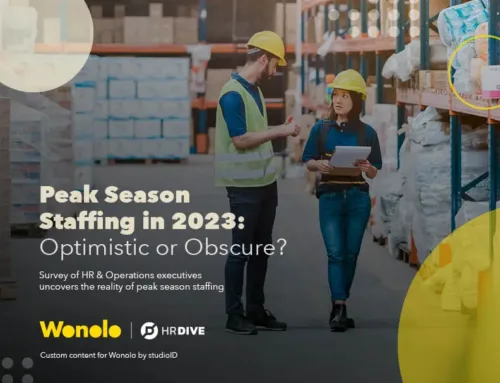Yong Kim
At Wonolo, our mission is to make work flexible and fulfilling for everyone. We witness every day how work brings a sense of belonging, a sense of respect, and a sense of dignity. Today, with millions of Americans unemployed and millions more underemployed, a paycheck matters more than ever. And that paycheck should be enough for people to live on.
Earlier this month, Congress proved there isn’t enough political support to raise the federal minimum wage to $15. But regardless of your political viewpoint, a uniform minimum wage is a blunt solution to a nuanced problem; $15 an hour is not enough in some parts of the U.S. but is too much for small businesses to bear in parts of America with a lower median wage.
It’s time for a new approach.
Let’s commit to a Living Wage standard that reflects the realities of local economies.
The Massachusetts Institute of Technology’s (MIT) Living Wage Calculator, as an example, takes into account the current cost of food, housing, medical care, transportation, cell phones, taxes, and other items necessary for workers to thrive where they live. Its calculations are presented at the county-level, and are updated annually.
Living Wage research and technologies powering job marketplaces like Wonolo offer valuable real-time data and analytical capabilities. These capabilities support the design and implementation of a Living Wage solution that is good for workers AND businesses.
A quick look at a few local economies helps show the merits of a Living Wage. For workers in Chicago, $15 an hour is likely insufficient because the Living Wage for a single working adult without children is $16.08 an hour. It’s also unlikely to be enough in Atlanta, where the Living Wage is $16.56 an hour.
On the flip side, in Charleston, West Virginia, a $15 minimum wage would be about 71% higher than the state’s current minimum wage of $8.75 and more than 20% above the $12.27 Living Wage. It’s clear that a Living Wage that is tailored to each location is the more reasonable approach to ensure that workers earn enough to live on.
If, instead of a $15 federal minimum wage, a Living Wage standard were in place, all American workers could earn enough to live. And businesses wouldn’t be forced to cut payroll to meet an arbitrary minimum wage – which means that workers would continue to have jobs.
Many businesses already understand that a Living Wage helps attract and retain more workers, and increases worker productivity. For example, recent research from Harvard University demonstrates that boosting pay by $1/hour for warehouse workers generates a return on investment of $1.44/hour. Companies see the value of paying more.
Wonolo connects workers with hundreds of thousands of jobs every year – and does this in cities and suburban areas throughout much of the country. For many workers, Wonolo is a stepping stone to traditional full-time work. We’re proud that about 75% of the jobs on Wonolo already offer at least the local Living Wage. (And every job posted on Wonolo already offers at least the local minimum wage.)
And we are aiming higher: our goal by the end of this year is that all workers on Wonolo will earn at least an hourly living wage. But we can’t do it alone.
Starting today, I am inviting like-minded companies to take the Living Wage Pledge with us: a pledge to pay workers at least the local Living Wage.
Commit to a better future for all workers here: blog.wonolo.com/livingwagepledge
-Yong Kim
CEO and Cofounder of Wonolo


![[Report] Beyond the Gig: Exploring Reliable Work Options for the Modern Workforce](https://info.wonolo.com/wp-content/uploads/2023/10/Worker-Preferences-Report-Header-Image-500x383.png)



